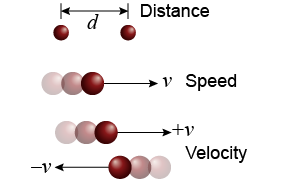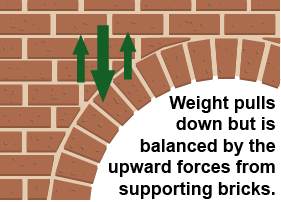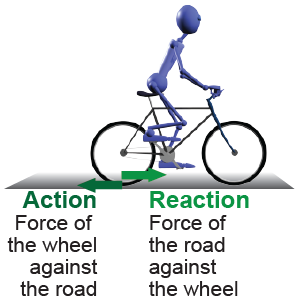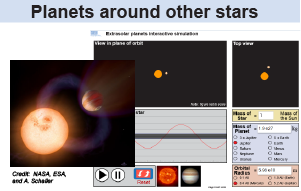|
 Mechanics is the branch of physics that deals with the “real” world of forces, objects, motion, and energy. Mechanics develops and applies mathematics to describe the physical world using concepts such as velocity, force, and acceleration. Acceleration is a challenging idea that eluded some of the brightest thinkers in history until the time of Galileo. Motion only changes through acceleration, leading us next to the concept of force.
Mechanics is the branch of physics that deals with the “real” world of forces, objects, motion, and energy. Mechanics develops and applies mathematics to describe the physical world using concepts such as velocity, force, and acceleration. Acceleration is a challenging idea that eluded some of the brightest thinkers in history until the time of Galileo. Motion only changes through acceleration, leading us next to the concept of force. 
 |
 Mechanics also tells you what happens when nothing is moving. For example, a bridge is designed not to move, which means the bridge must be designed so that the total force acting on every part remains zero. If this seems strange, consider that gravity pulls every brick in a bridge down. The whole point of the structure of a bridge is to provide an opposing set of forces holding each brick up.
Mechanics also tells you what happens when nothing is moving. For example, a bridge is designed not to move, which means the bridge must be designed so that the total force acting on every part remains zero. If this seems strange, consider that gravity pulls every brick in a bridge down. The whole point of the structure of a bridge is to provide an opposing set of forces holding each brick up. 
|
 A force is an action that can make things move, change direction, or stop. We all have an intuitive notion of force. Physics makes the intuition exact by precisely describing how an object moves, or doesn’t move, in response to the strengths and directions of forces acting on it. Newton’s laws are the framework for understanding how forces cause accelerations and are caused by accelerations. For example, the force that accelerates a bicycle is not the force of the wheel pushing against the road. That force acts on the road. The reaction force acting back on the bicycle is what moves the bicycle because the reaction force acts on the bicycle.
A force is an action that can make things move, change direction, or stop. We all have an intuitive notion of force. Physics makes the intuition exact by precisely describing how an object moves, or doesn’t move, in response to the strengths and directions of forces acting on it. Newton’s laws are the framework for understanding how forces cause accelerations and are caused by accelerations. For example, the force that accelerates a bicycle is not the force of the wheel pushing against the road. That force acts on the road. The reaction force acting back on the bicycle is what moves the bicycle because the reaction force acts on the bicycle. 
|
 Physics concepts explored in forces and motion underlie cutting-edge advances, such as the discoveries of hundreds of planets orbiting around other stars, far from our Sun. Many of these extrasolar planets have masses similar to Jupiter, but they orbit their sun closer than Mercury is to our Sun. Some orbit as quickly as a few days!
Physics concepts explored in forces and motion underlie cutting-edge advances, such as the discoveries of hundreds of planets orbiting around other stars, far from our Sun. Many of these extrasolar planets have masses similar to Jupiter, but they orbit their sun closer than Mercury is to our Sun. Some orbit as quickly as a few days! 
|
 This is the age of energy, and mechanics helps us understand different kinds of energy. When you switch on an air conditioner, the equivalent energy output of ten working people travels through electrical wires from a power station 100 miles away. The engine of a moderate-sized car generates 150 horsepower—the equivalent energy output of 500 people! Modern energy use is clean, quiet, and simple. The human standard of living has risen hand-in-hand with the increase in available energy per person.
This is the age of energy, and mechanics helps us understand different kinds of energy. When you switch on an air conditioner, the equivalent energy output of ten working people travels through electrical wires from a power station 100 miles away. The engine of a moderate-sized car generates 150 horsepower—the equivalent energy output of 500 people! Modern energy use is clean, quiet, and simple. The human standard of living has risen hand-in-hand with the increase in available energy per person. 
|
Which of the following is an example of forces interacting with objects to alter motion? - A gardener pushes a wheelbarrow.
- The Earth orbits around the Sun.
- Two magnets pull toward each other.
- all of the above
 |
All of the above is correct. There are many different kinds of forces, but whenever an object's motion changes, there is a force involved. 
|
| |
|

